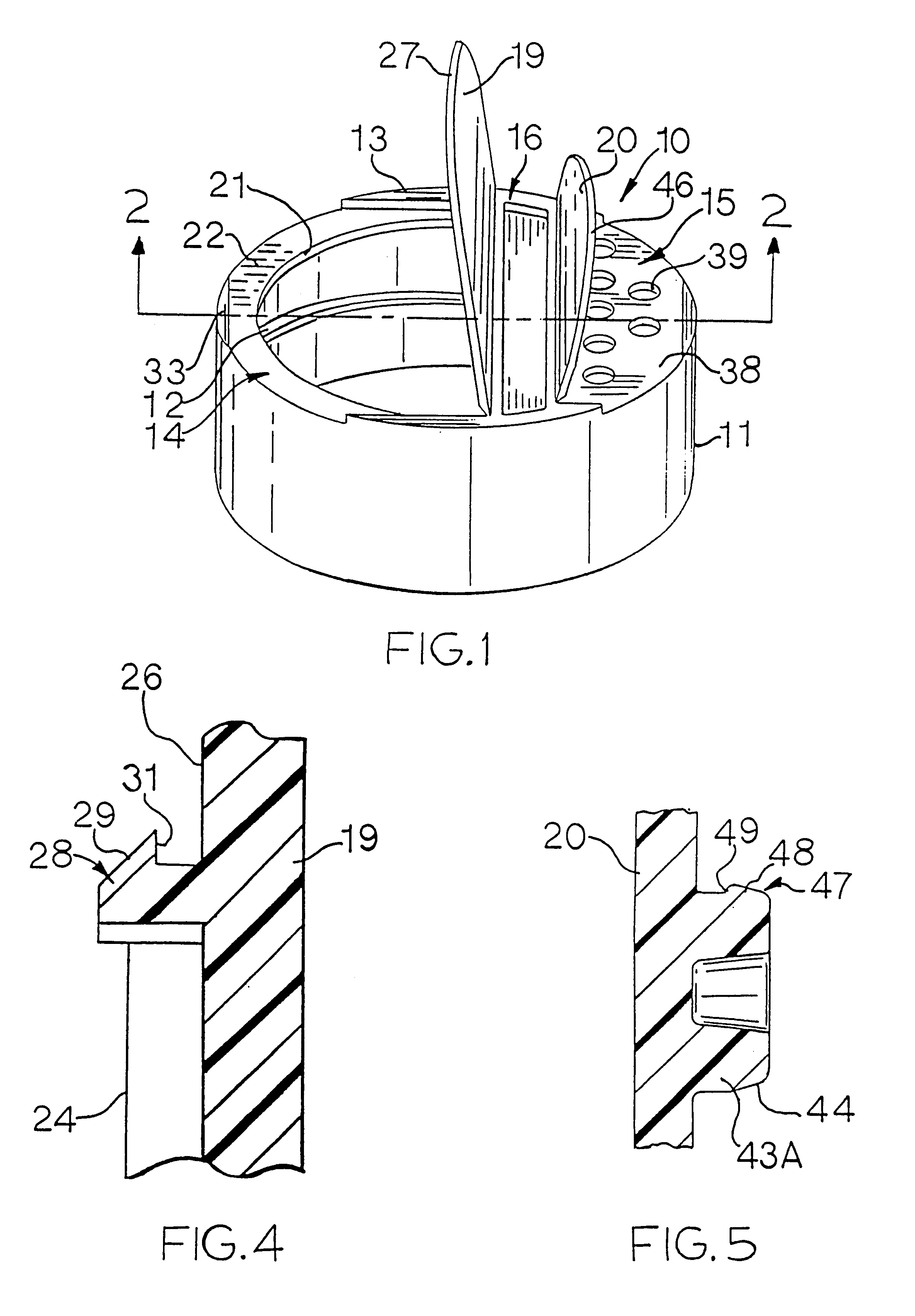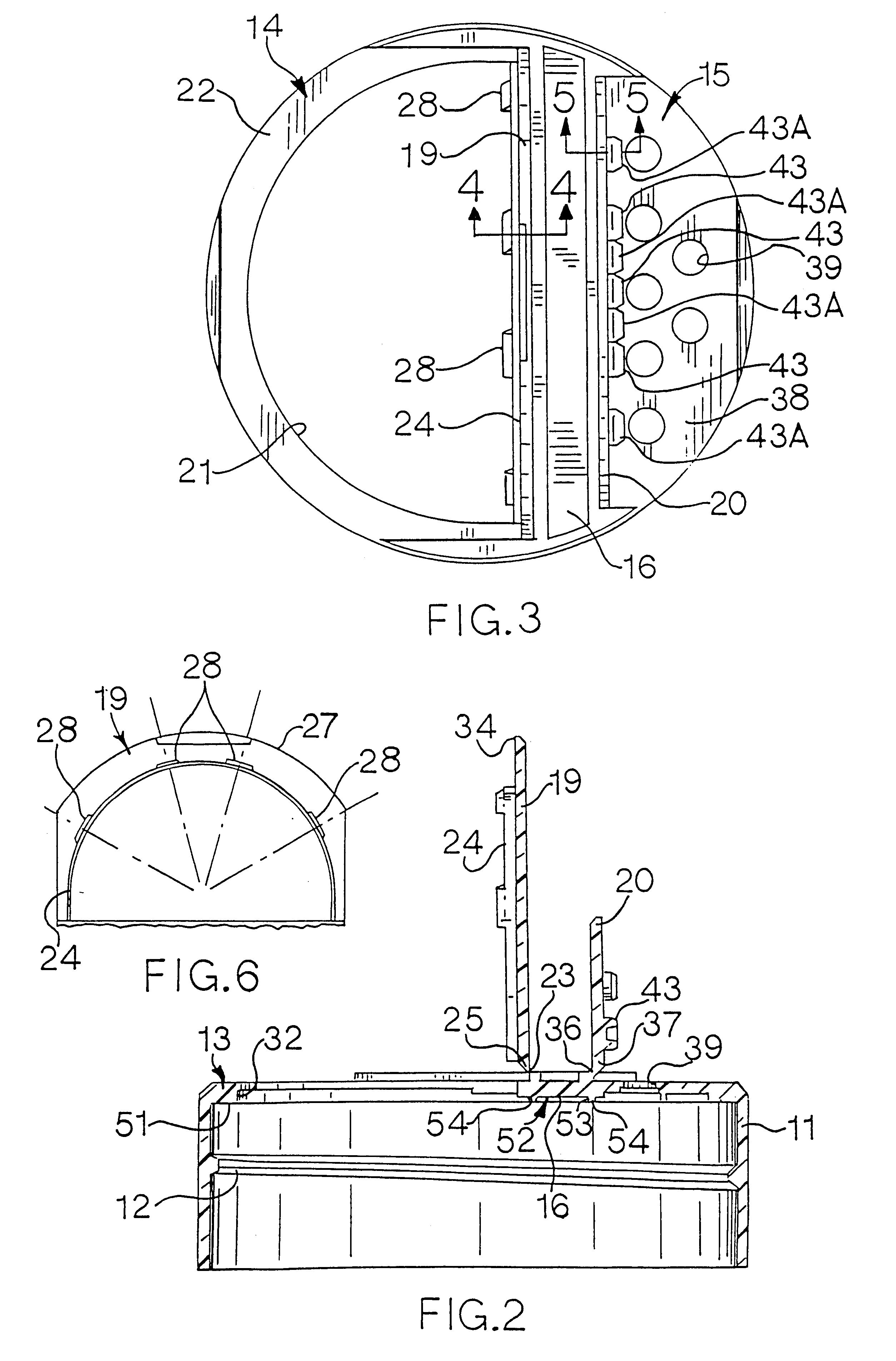Two-flap closure
a closure and two-flap technology, applied in the field of containers, can solve the problems of inconvenient size restriction, tendency of the closure to take an out-of-round or oval set, non-symmetry of the cap, etc., and achieve the effect of reducing quality-related problems and high total retention for
- Summary
- Abstract
- Description
- Claims
- Application Information
AI Technical Summary
Benefits of technology
Problems solved by technology
Method used
Image
Examples
first embodiment
Referring now to the drawings, a two-flap closure or cap 10 constructed in accordance with the invention is shown in FIGS. 1 through 6. The cap or closure 10 is arranged to dispense pourable material in either a spoon or a shake mode from a container (not shown) on which it is mounted. The cap 10 is a unitary injection-molded plastic part, preferably formed of thermoplastic material such as polypropylene. The cap 10 is circular in plan view and includes a cylindrical tubular skirt 11. Screw threads 12 on the interior of the skirt 11 mate with external screw threads on the mouth of a container for the purpose of mounting the cap 10 to the container. An end wall 13, bounded by the skirt 11, is divided into spoon and shake sections 14, 15 by a chordal land area 16. In the illustrated case, the spoon section 14 is considerably larger than the shake section 15, their respective areas roughly representing a division of the end wall 13 by two-thirds for the spoon section and one-third for ...
second embodiment
the invention is illustrated in FIGS. 7 through 13. In this second embodiment, elements of a cap 110 having the same general structure and function as elements of the cap 10 of FIGS. 1 through 6 have been designated by identical numerals. The cap 110 includes means indicated generally at 111 to reduce its tendency to set into an oval configuration upon release from a mold, cooling, and thermal shrinkage. The ovality reducing means 111 comprises reduced wall thickness zones at opposite ends of a chordal land area 16'. As indicated in FIGS. 8 and 12, the land area 16' includes a bar-like rib 113 extending lengthwise of the land 16'. The rib or bar 113 has a relatively heavy cross section in the majority of its length along the land 16'. As seen in FIG. 12, the areas 111 have substantially less thickness, measured vertically, than that of the rib 113.
It is believed that these reduced wall thickness areas or zones 111 form "freeze points" at which relatively quick setting of molten plas...
PUM
 Login to View More
Login to View More Abstract
Description
Claims
Application Information
 Login to View More
Login to View More - R&D
- Intellectual Property
- Life Sciences
- Materials
- Tech Scout
- Unparalleled Data Quality
- Higher Quality Content
- 60% Fewer Hallucinations
Browse by: Latest US Patents, China's latest patents, Technical Efficacy Thesaurus, Application Domain, Technology Topic, Popular Technical Reports.
© 2025 PatSnap. All rights reserved.Legal|Privacy policy|Modern Slavery Act Transparency Statement|Sitemap|About US| Contact US: help@patsnap.com



